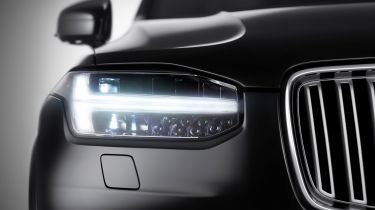Car headlights explained: LED, halogen, xenon, laser and future headlight tech
We look at the many different types of car headlight and explain how each technology works
Car headlights were once comparatively straightforward affairs, consisting of a bulb, a reflective bowl and a glass front. While better than nothing, a couple of well-placed tealights would have rivalled many of them for illuminating power.
Over time, motorists’ desire to see where they were going in the dark has led to ever more advanced car headlight technology. We’ve witnessed halogen and then xenon lights emerge, both marking major leaps forward in automotive lighting, but as manufacturers searched for more energy efficient electronics in cars (after all, sat-navs, air-conditioning and large sound systems all sap power from the engine), LED headlight units have become popular.
• Best headlight bulbs on sale
Use of these light emitting diodes was taken even further, with the birth of LED matrix headlights – sometimes referred to as adaptive headlights. These became the best car headlights money could buy - briefly. Soon Audi and BMW came along with laser lights, which pushed the automotive illumination envelope further still. How soon will the next breakthrough come? Who knows, but let's take an in-depth look at the options currently on the market.
Which type of headlight is best for you?
While the following pages (which you can access using the links at the top left, or bottom of this page) will explain how each type of bulb works, knowing how to choose between them as a car buyer is a different kettle of fish.
Halogen bulbs are the oldest type of light on this list and if you’re looking for cheap, relatively reliable bulbs, you shouldn’t have worries with a set of halogen headlamps. However, they lack the high-tech look of more expensive options and cannot match the likes of LEDs for light output, efficiency and lifespan.
Xenons on the other hand help modernise the look of a car with their crisp blueish light, so could help with the saleability of your car. The cost of replacing xenon bulbs is more than halogens, due to their added complexity, and while the xenon bulb should outlive a halogen one, LEDs can beat them both.
• Best headlight bulbs on sale
LED lights range from relatively simple affairs to some of the most complex (and therefore expensive to repair and replace) units on the market. LEDs not only look modern, but at the higher end of the market offer something commonly referred to as matrix technology. Here LEDs are teamed with mirrors and sensors to adapt their beams and give maximum coverage of the road ahead, even taking into account oncoming traffic. The style and added safety of better night vision is highly desirable and may go a long way when it comes to selling your car.
Finally, we have laser headlights, and while they offer the best illuminating power, they are only found on a few new cars from the upper end of the market. The main reason for this is initial cost and cost of repair/replacement. Not only do they cost an arm and a leg to buy (they cost over £5,000 if opted for on the BMW i8), but you will have an expensive time fixing them if they are even slightly damaged.
Now you have a better idea of which headlights are best for you, read on to find out how each one works.
• What are LED headlights and how do they work?• What are halogen headlights and how do they work?• What are xenon headlights and how do they work? • Future headlight technology
Find a car with the experts


